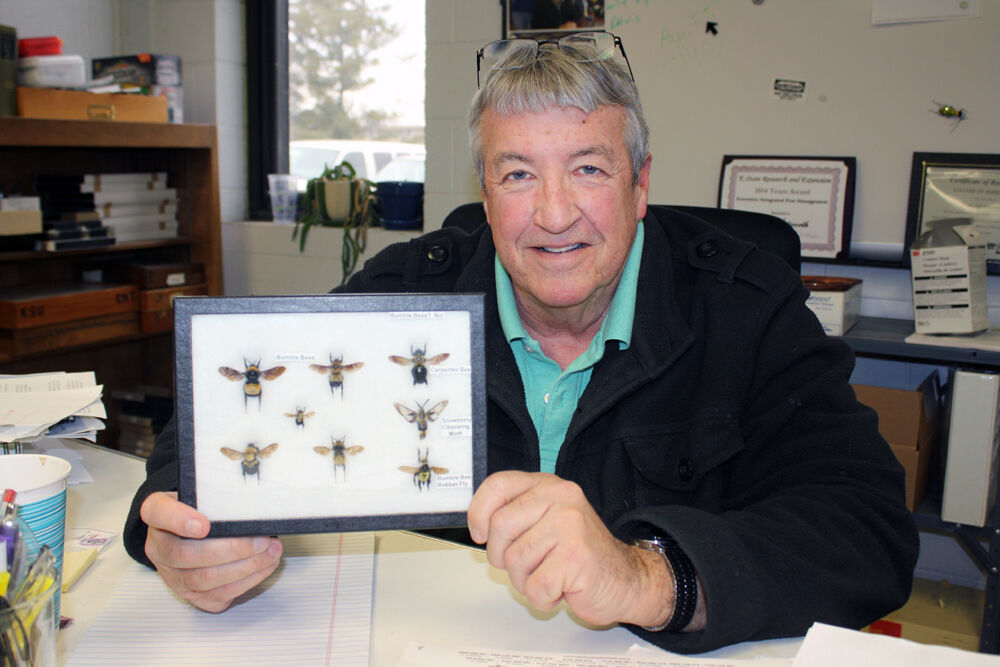Alfalfa and hay producers are encouraged to be proactive when it comes to pests and this year they really need to be paying attention for one weevil in particular, according to one expert.
Jeff Whitworth, a professor in entomology at Kansas State University, has studied alfalfa weevils and other pests for many years, and he said most alfalfa producers treat the pest in April. Because of this treatment many beneficial insects are lost in the process, which allows pea aphids and cowpea aphids, for example, to increase their populations. As a result, in May, especially after the first cutting, growers should watch for aphids and then potato leafhoppers.
“First and foremost—and by far and away the worst pest of alfalfa is the alfalfa weevil,” Whitworth said. “This is a cool weather insect and can be devastating to alfalfa prior to the first cutting. Most fields need some sort of weevil control in order to not donate the first cutting to the alfalfa weevil.”
Unfortunately 2023 seems to be a really encouraging year for the pest and every field seems to have reached a treatment threshold and has been treated at least once, he said.
Dryness curve
The drought has seriously stressed much of the alfalfa across north central Kansas, Whitworth said. Plants were stressed coming out of dormancy and did not grow well.
“Then the alfalfa weevil feeding is imposed upon those struggling plants and that just increases the negative impact this feeding damage has on these plants,” he said. “So the plants are not growing well but the weevils are.”
Insecticides
The loss of or lack of certain chemical applications most notably chlorpyriphos, commonly known as Lorsban, has hurt growers, he said, because of its all around effectiveness as an insecticide. However, he said there are several others that can be effective. Most alternatives are listed in 2023 Kansas State University Crop Insect Management Guides and growers will need to select the appropriate crop.
Researchers have tested alternative treatments in the attack on alfalfa weevils.
“We have tried late winter and early spring flaming to burn existing plants and eggs; pulling heavy rollers across the field to squash eggs; grazing livestock; and fall insecticide applications—all trying to control alfalfa weevils,” he said. “All worked somewhat but not consistently well enough that we feel comfortable to recommend any of them as an alternative to conventional insecticides.”
In alfalfa, growers need to be concerned with potato leafhoppers attacking alfalfa fields from June to September. These pests can cause “hopper burn” because as they feed on the leaves they remove fluid and inject a toxin, both of which can negatively impact the plants, Whitworth said. Also aphids build up enough to occasionally cause concern but usually alfalfa weevils and potato leafhoppers are the annual concern.
The need to scout
Whitworth said scouting and monitoring alfalfa like other crops is always a good idea.
“That’s how you determine first of all if the pest is even present and then if it is present, then in what density,” he said. Every year K-State updates and publishes a crop insect management guide that is a valuable source to learn about pests, damage, sampling and possible treatments for all he common pests in Kansas, he said.
Other states also publish guides to assist growers.
Game planning
Alfalfa weevils have a few natural enemies but nothing that can control them well enough to eliminate them without a more conventional insecticide application, Whitworth said. Some aphids can be well controlled by lady beetles, green lacewings and parasitoids but that does not work as well on weevils.
“Scout and only treat if justified by the density of the pest,” he said. “If treatment is justified, applications need to be well timed and used with enough carrier to get coverage of all plants.”
Dave Bergmeier can be reached at 620-227-1822 or [email protected].




